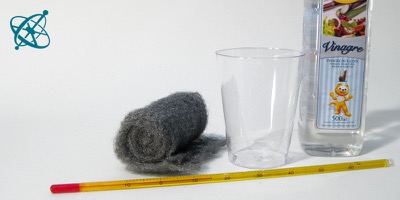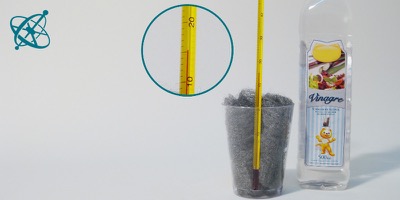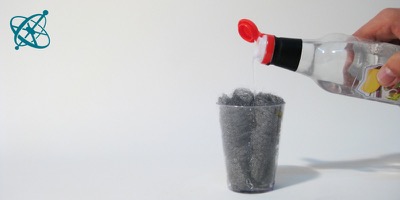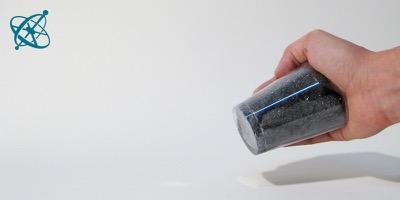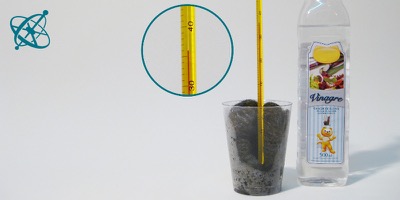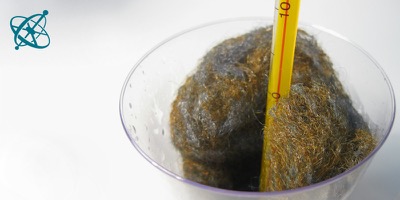 www.sciensation.org | Ciênsação hands-on experiments are published as Open Educational resources under a Creative Commons Attribution-ShareAlike 4.0 International License.
www.sciensation.org | Ciênsação hands-on experiments are published as Open Educational resources under a Creative Commons Attribution-ShareAlike 4.0 International License.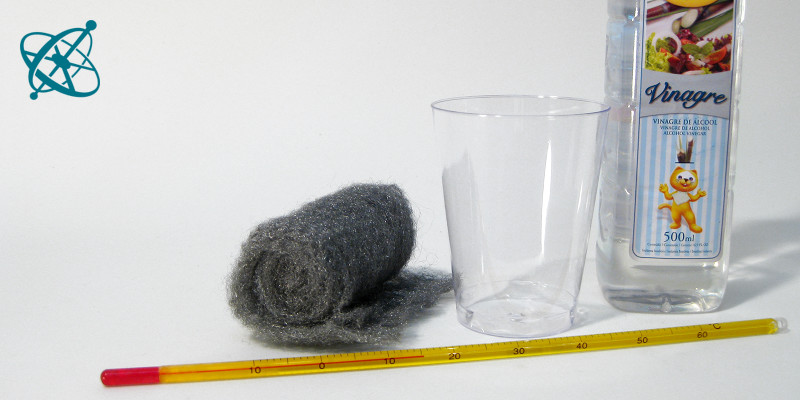
A hand warmer from steel wool?
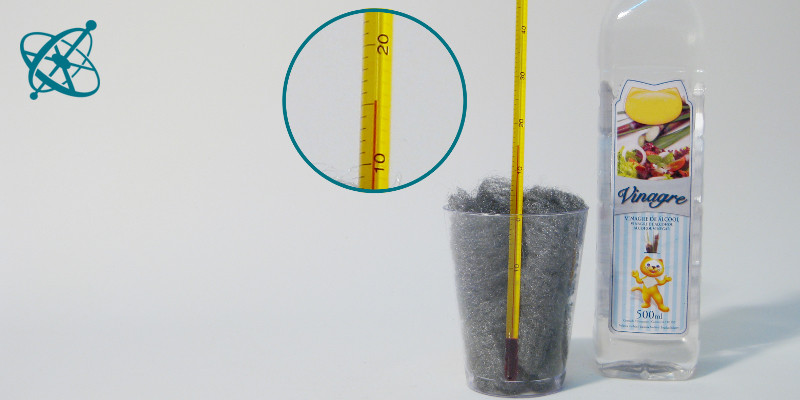
Just put it into a cup,…
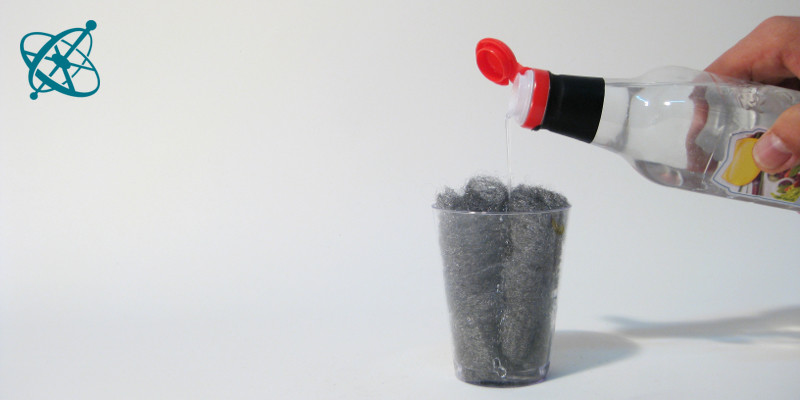
…add some vinegar…
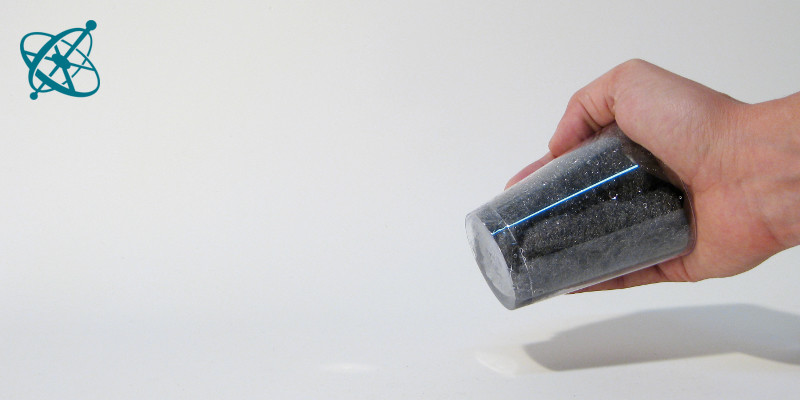
…and shake the cup.
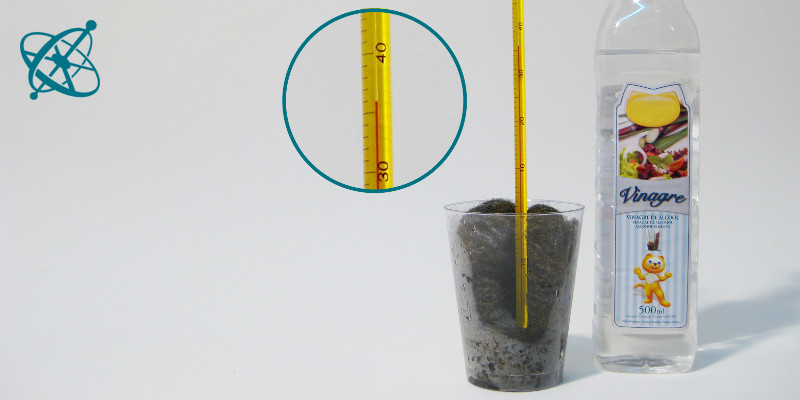
After some minutes you'll note the temperature raising…
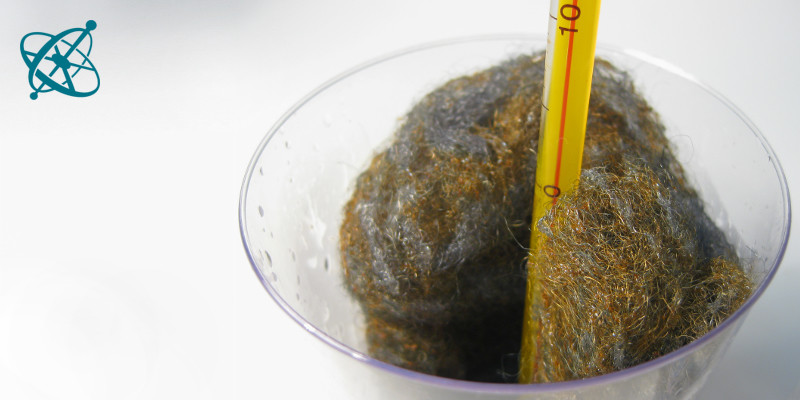
…and the steel changing color due to oxidation.
Warm steel wool
The fast rusting of steel wool is a safe and clear example of an exothermic reaction that can be done with regular household items.
If you want to contrast endothermic and exothermic reactions, you might want half of the class to do this experiment and the other half the endothermic reaction 'Colder than ice'.
Exothermic reactions create heat.
Oxidation of iron is an exothermic reaction.
Plastic cup
Vinegar
Thermometer
Loosen up a ball of steel wool, push it in a plastic cup and add a tablespoon of vinegar. Cover the cup and shake it, so that all the steel wool gets in contact with the vinegar. Then place a thermometer in the steel wool.
1. Why does the temperature in the wool rise?
2. Where does the energy come from?
Is a chemical reaction taking place?
› Yes, the steel wool rusts and becomes brown.
What are the reactants and what is the product?
› Oxygen (O2), iron and vinegar (mainly water and a bit of acetic acid) react to form iron oxides (rust).
What changes in a chemical reaction?
› Chemical bonds.
Have all chemical bonds the same energy?
› No.
What happens to the difference in bond energy?
› In this case it is released as heat (see also 'Colder than ice').
Vinegar is an acid which removes the protective layer of steel wool and accelerates the oxidation of steel. The formation of rust is an exothermic chemical reaction because the newly created bonds between single oxygen atoms and iron need less energy than the bonds between two oxygen atoms, as it is usually found in air.
Interestingly enough, this reaction not only produces heat but also adds mass to the steel wool (due to the bound oxygen), which can be measured with an analytical balance.
